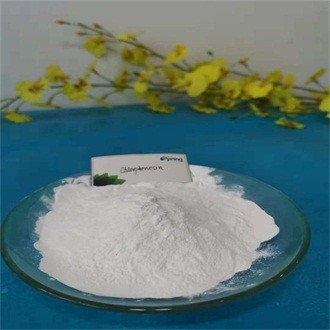chlorphenesin is indeed used as a preservative in cosmetics due to its antiseptic properties. However, if you are looking to enhance its effectiveness as an antiseptic, there are several methods that can be employed. Here are a few approaches:
Synergistic combinations: chlorphenesin can be combined with other preservatives or antimicrobial agents to enhance its antiseptic effect. Synergistic combinations are often more effective than using a single compound alone. For example, it can be combined with other phenolic compounds like thymol or eugenol, or with parabens, which are commonly used as preservatives in cosmetics. Such combinations can provide a broader spectrum of antimicrobial activity.
pH optimization: The antimicrobial efficacy of chlorphenesin can be influenced by the pH of the formulation. Microorganisms have different susceptibility to antiseptics at different pH levels. Adjusting the pH of the cosmetic formulation to an optimal range can enhance the effectiveness of chlorphenesin as an antiseptic. This can be achieved by formulating the product at a pH that is unfavorable for the growth of microorganisms.
Formulation considerations: The physical and chemical properties of the cosmetic formulation can significantly impact the antiseptic effect of chlorphenesin. Factors such as solubility, compatibility with other ingredients, and the presence of surfactants can influence the antimicrobial activity. It is crucial to carefully select and optimize the formulation components to ensure maximum efficacy of chlorphenesin as an antiseptic.
Increased concentration: Increasing the concentration of chlorphenesin in the cosmetic formulation can enhance its antiseptic effect. However, it is important to note that higher concentrations may also lead to increased skin irritation or sensitization. Therefore, any increase in concentration should be done within the safe usage limits and considering the potential impact on skin tolerance.
Enhanced delivery systems: Novel delivery systems can be employed to improve the penetration and efficacy of chlorphenesin. For example, encapsulation of chlorphenesin in liposomes or nanoparticles can protect the active ingredient, control its release, and improve its stability and bioavailability. These delivery systems can provide sustained release of the antiseptic, prolonging its action and enhancing its efficacy.
It is important to note that any modifications to the formulation or use of chlorphenesin should comply with regulatory guidelines and safety standards. Additionally, conducting appropriate stability and efficacy testing is essential to ensure that the modified formulation maintains its antimicrobial properties over time.
Post time: Jun-07-2023


